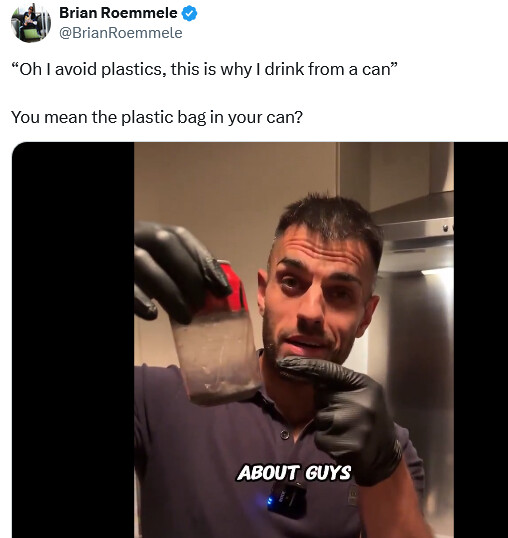I’m currently using large silicone ice trays with covers for supplements. each day, I transfer the contents to a paper cup, which is probably not the most efficient way to do this.
2 Likes
I love mine! Very expensive, but it will last me a life time. Nice and sturdy, love the magnetic features, and super easy to fill (much easier than my old plastic one):
4 Likes
Bicep
#374
Paint again. Why not just not paint the caps? I never knew paint was such a bad thing.
Stay away frm the gulf cost
Bicep
#376
I thought, wow they figured out how to refine their product better to get the plastic out. No, they took out the plastic measuring scoop. I had to read for 10 minutes to figure it out. So go find your own spoon, or carve one out of wood. They’re bragging about this on the label without explaining it.
2 Likes
A_User
#379
If you want to prevent microplastics in plaque - prevent atherosclerosis and plaque?
1 Like
The study found an average concentration of nanoplastics near coastlines of 25 milligrams per cubic meter of water — about the weight of a single large bird feather.
“We all expected nanoplastics, the surprising part is the amount of it,” said Sophie ten Hietbrink, a doctoral student at Stockholm University in Sweden and a lead author of the study. She spent four weeks on a boat expedition collecting samples of water across nearly 3,500 nautical miles of coastlines and open ocean near Europe, led by Helge Niemann, a professor at Utrecht University and a scientist at the Royal Netherlands Institute for Sea Research.
https://www.nature.com/articles/s41586-025-09218-1
A_User
#383
I’ve never seen a person without microplastics Drink a Diet Coke

Video in post 
https://x.com/BrianRoemmele/status/1946203133295907126#m
4 Likes
Neo
#384
What are people’s thoughts on this
@RapAdmin @AlexKChen @A_User @adssx @Davin8r @John_Hemming
For the first time ever, we can effectively reduce inflammation by removing microplastics, forever chemicals, and toxins from your blood with CE marked Clari by Marker
HOW IT WORKS
Your blood is made up of cells and a carrier fluid called plasma. All harmful substances like microplastics and forever chemicals are carried in your plasma. Our Clari procedure removes these toxins from your plasma.
During the Clari procedure, your plasma is gently separated from your red and white blood cells in a process called apheresis. The plasma is then passed through our safe and effective CE marked Clari column. The damaging substances like microplastics, forever chemicals, and inflammatory proteins are captured and removed.
Unlike Therapeutic Plasma Exchange (TPE) nothing is added to your plasma during this process. This means your plasma retains your unique and critical immune balance, electrolytes, clotting factors and cell signaling. After the harmful substances are removed, your clean plasma and blood cells are recombined before being returned to you.
Clari procedure helps clean your blood by removing harmful substances, while keeping all your blood’s essential components intact.
https://clarifyclinics.com/
Claims to remove very high percent of micro plastics and other pollutants from our blood
2 Likes
A_User
#386
I like the idea of applying established science on one’s body (even if not many know about it), not being at the cutting edge, personally. But that might be because I haven’t applied much yet.
1 single positive clinical trial without any serious methodological flaws (like p-hacking) qualifies as established science in my view.
This needs an objective assessment. I am currently not of the view that this is a massive issue.
1 Like
I’m still way less concerned about this route than other routes, b/c overall PM10 levels are way below what they were 15-20 years ago, and microplastic PM10 is less toxic than PM10 as a route of combustion
If airbourne microplastics were a very large fraction of total micronanoplastic consumption, I would be much less concerned about them (given some priors), but unfortunately, it doesn’t seem that they are.
adssx
#390
Do you have a source about this? Is it the case all around the world or in selected cities/countries?